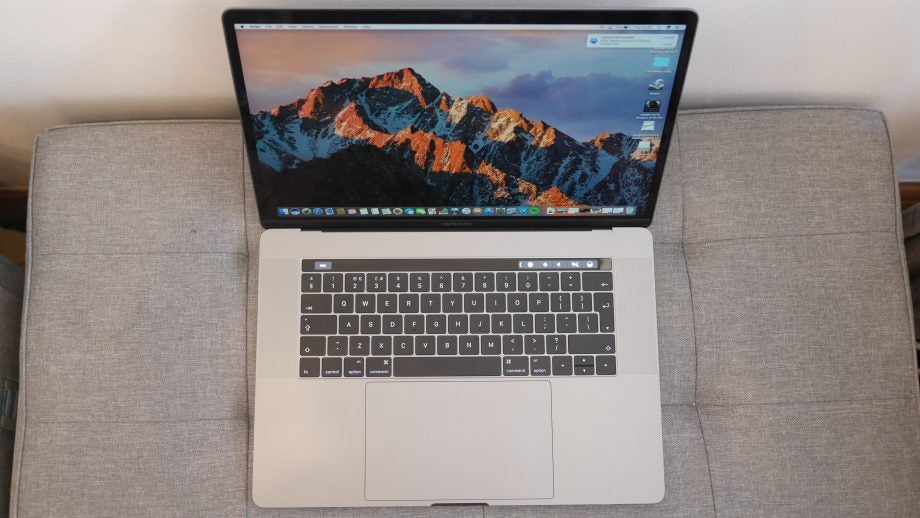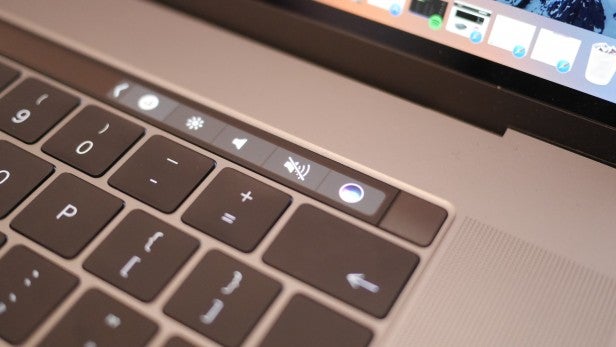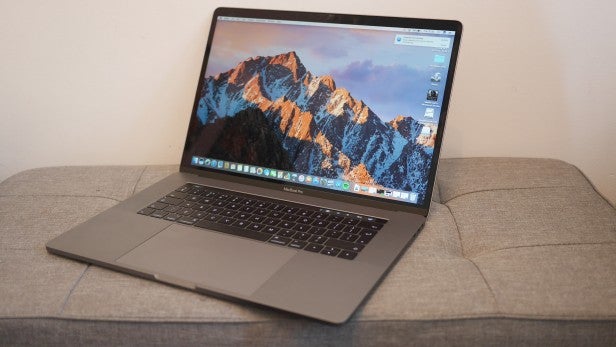MacBook Pro 15-inch (2016) Review
MacBook Pro 15-inch (2016)
The ultimate media creation laptop?

Sections
- Page 1 MacBook Pro 15-inch (2016) Review
- Page 2 Performance and battery life Review
Verdict
Pros
- Stunning screen
- Top-notch processor
- Classy design
- Excellent connectivity
- MacOS continues to be brilliant
Cons
- Inconsistent battery life
- Fairly weak graphics performance
Key Specifications
- Review Price: £2349.00
- Quad-core 2.6-3.5GHz Intel Core i7 processor (upgradeable to 2.9-3.8GHz)
- 16GB memory
- 4x ThunderBolt 3/USB-C connectors
- AMD Radeon Pro 450 (upgradable to 460)
- 256GB PCIe SSD (up to 2TB)
- Weight: 1.83kg
- 2880 x 1800-pixel screen
- Touch Bar
What is the 15-inch MacBook Pro?
Apple’s MacBook Pro line is traditionally topped out with an ultra-powered multimedia machine with the best laptop components you can find. The latest model is no different, and, like the two 13-inch models Apple introduced in 2016, it’s benefited from a complete design overhaul along with a huge specifications boost.
It’s the most powerful laptop in Apple’s lineup, with the excellent MacOS on-board along with some as-yet unbeaten specifications. It has some exceptionally strong yet cheaper Windows-powered rivals, including gaming laptops such as the Razer Blade and premium laptops such as the Dell XPS 15.
The 15-inch MacBook Pro is a unique proposition, and it’s one of the most technically impressive laptops I’ve ever used. It won’t be for all – very few, in fact – but those who need it will love it.
Apple is expected to update the specs of is MacBook Pro line-up in June, so it might pay to wait and see whether you can get better specs for the same money or a little discount on a 2016 model.
Related: Best laptops
15-inch MacBook Pro – Design, Build and Features
It’s easy to wax lyrical about how impressive the MacBook Pro is in terms of design. The chassis is made from a single piece of machined aluminium, meaning there are no gaps or screws on the top or sides of the device.
Smooth corners, sharp edges and acres of aluminium give the Pro a premium feel. Despite its all-metal design, it actually weighs a little less than the Dell XPS 15, at just 1.83kg. This isn’t slight by any stretch, but it’s a full 200g lighter than the XPS 15 (with the recommended 97Wh battery) and has the added advantage of coming with a lightweight USB-C power brick.
Around the edges of the laptop are four USB-C/ThunderBolt 3 connectors. All of them run at the maximum speed the ThunderBolt 3 standard can muster, which is up to 40Gbps. This, for me, is the first place where the Pro moniker can really be seen. There’s no other laptop on the market that offers this level of connectivity, and while the absolute maximum performance here will surely only be used by those working in creative environments – such as audio and video studios – these ports are future-proof.
But, as is now customary to mention, Apple doesn’t ship any adapters in the box to let you hook up your legacy equipment – including Ethernet and old-fashioned USB Type-A. Apple-approved accessories are relatively expensive – £20 for a USB-C to A and £69 for a HDMI, USB and USB-C adapter – although in the context of a £2300+ laptop, these costs do pale into insignificance somewhat.
15-inch MacBook Pro – Keyboard, Touchpad and Touch Bar
The keyboard on the 15-inch MacBook Pro is superb, although it won’t be suitable for everybody. It uses Apple’s so-called Butterfly technology, which prioritises tactile feedback over how far the keys actually travel when you press them. For fast typists it’s excellent; although it’s fairly easy to pick up pace anyway thanks to the quick action. It takes some getting used to, though, so I’d recommend popping to your local Apple reseller and trying one out.

Above the keyboard is the fabled Touch Bar. I wrote about this feature at length in the 13-inch MacBook Pro review, and it’s the same setup here. The OLED panel above the keyboard effectively adds another row of customisable and contextual keys. The more I use it, the less I like it, because it adds a layer of complexity to everyday apps that I don’t really need.
In apps such as Photoshop, it does have some use, adding buttons and options to within a finger’s reach of the keyboard. But it takes a huge amount of getting used to, and since the huge touchpad on the 15-inch MacBook Pro is so utterly excellent, it almost always feels easier to use that instead.
More often than not, I have found myself simply keeping the classic list of actions open on the Touch Bar, so I can easily adjust brightness, volume and music tracks without having to think about it.
I do love the fingerprint scanner that’s integrated into the power button, though. You can simply tap the button, wake up the laptop and log in without any faff.

As mentioned above, the touchpad is the best in the business. Not only is it huge, it’s sensitive, accurate and provides access to all manner of easy gestures, such as swiping between virtual desktops, scrolling, Mission Control and your basic clicking and dragging. There’s nothing not to like here. Windows touchpads have come a long way, but Apple is still way ahead of the game here.
15-inch MacBook Pro – Screen
The second pro-level feature on the MacBook Pro is its screen. It’s simply unmatched by anything else I’ve seen. It displays incredibly deep blacks, blindingly bright whites and pitch-perfect colour accuracy.
Related: IPS screen technology explained
To put that numerically, we’re looking at a screen that can nudge the better part of 500 nits of brightness; by comparison, even the brightest of laptops won’t go much over 350 nits. Colour coverage is immense, with 100% of the sRGB colour gamut and 99% of the cinema standard DCI-P3 gamut covered.
It’s a 15.4-inch panel with a resolution of 2880 x 1800 pixels, which equates to 220 pixels per inch. Images are packed with detail, and macOS does a great job of scaling programs to make everything legible, while ensuring high-resolution pictures and video can be seen in their full glory.
How we test laptops
Unlike other sites, we test every laptop we review thoroughly over an extended period of time. We use industry standard tests to compare features properly. We’ll always tell you what we find. We never, ever, accept money to review a product.


